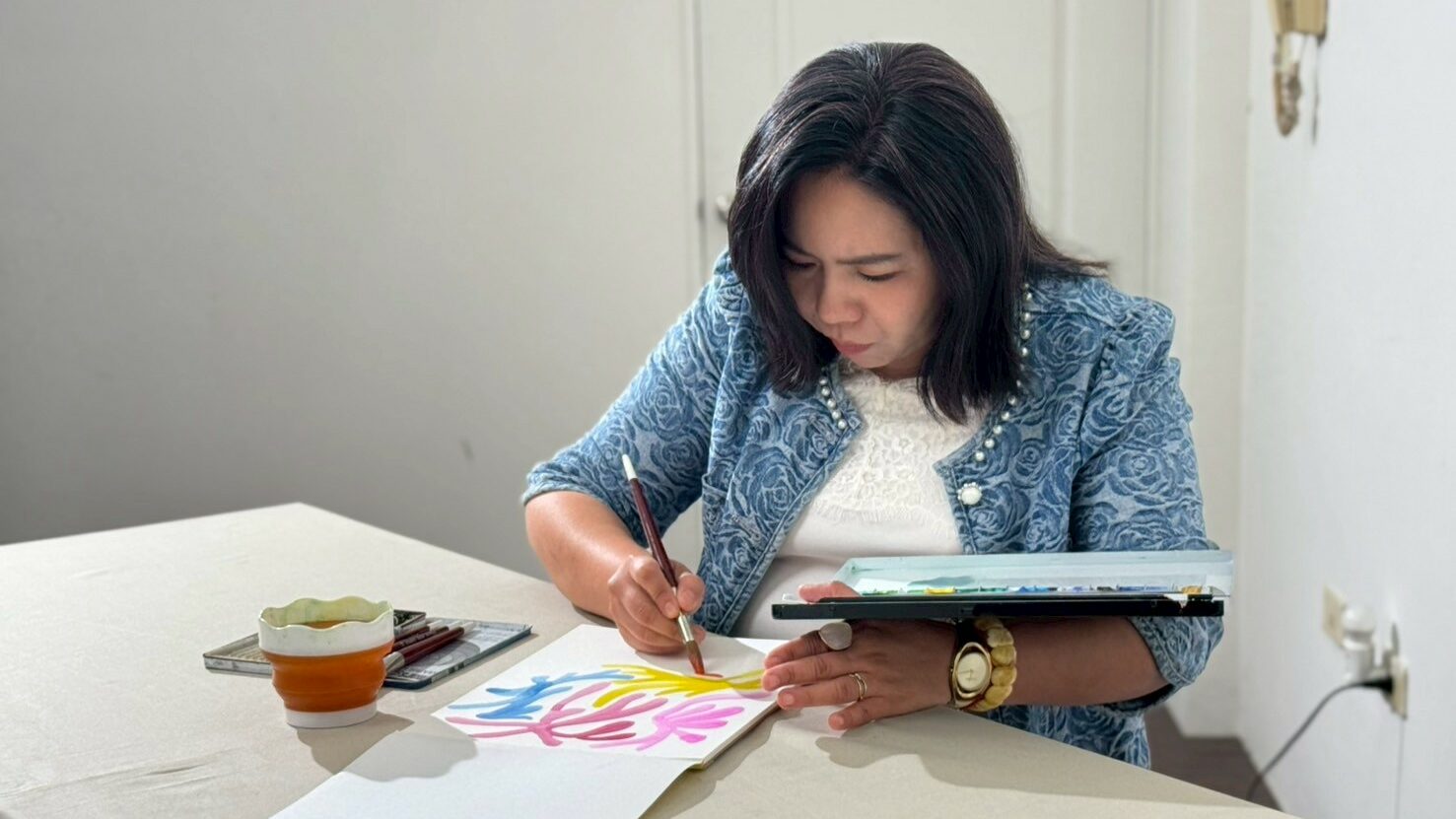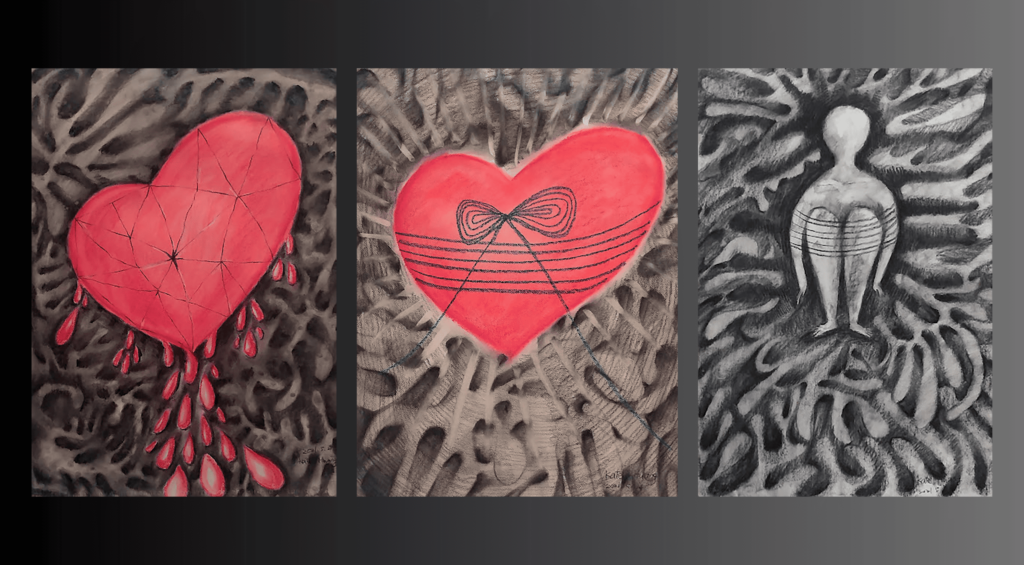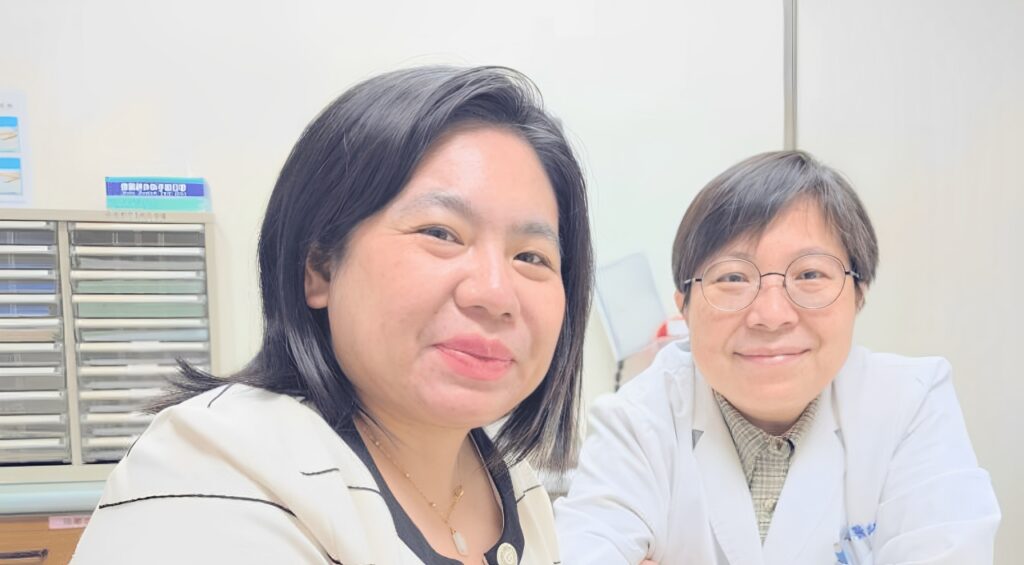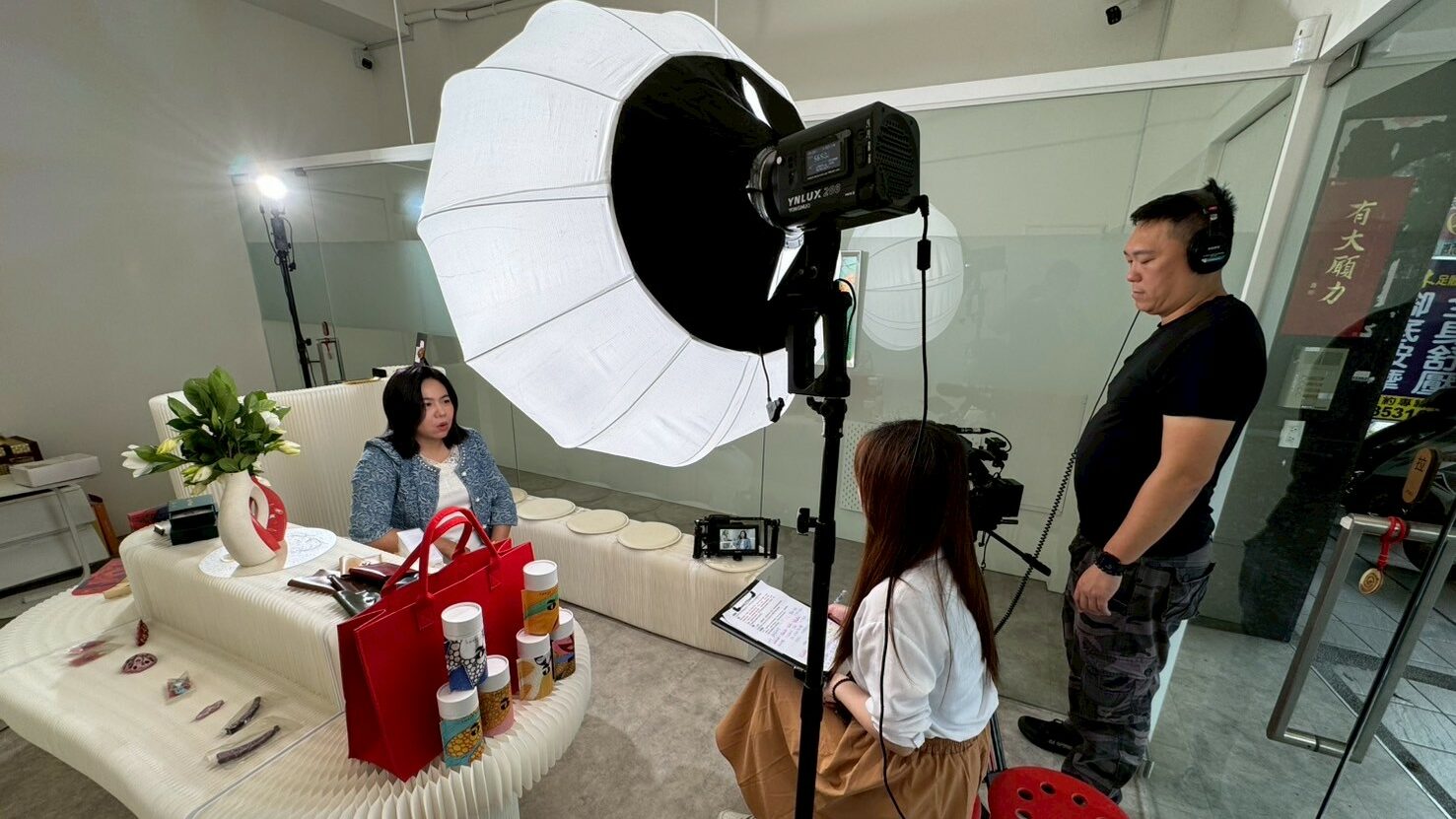Art and medicine may, at first glance, seem to speak entirely different languages — one rooted in emotion, intuition, and freedom; the other grounded in logic, data, and structure. Yet at certain pivotal intersections of life, these two realms can complement one another, weaving together a more holistic form of human healing.
In this special feature, 《The Icons》brings together two voices from seemingly distant worlds — artist Kate Huang and psychiatrist Su-Ting Hsu — for an in-depth dialogue on the theme of healing.
Kate Huang, a Taiwanese artist, underwent a decade-long recovery journey after being diagnosed with schizoaffective disorder. Emerging from a period marked by cognitive disintegration and speech delay, she began to reconstruct her identity through art. Her creative philosophy, which she calls “Mind-Heart Integrated,” merges art, psychology, and neuroscience into a singular language — a visual path that charts her transformation from fragmentation to integration.
Dr Su-Ting Hsu is Director of Community Psychiatry at Kaohsiung Municipal Kai-Syuan Psychiatric Hospital. She has dedicated her career to public mental health, the care of patients with schizoaffective disorders, and the promotion of community-based recovery. For her, medicine is not merely a one-way delivery of expertise, but a human connection built on empathy and equality. She sees art not simply as a mode of expression, but as an internal movement that helps rebuild the structure of life.
One restructures emotional rhythms through brushstrokes and canvas; the other witnesses the return of agency and strength in patients through clinical work. Though they began from vastly different places, they intersect at the shared philosophy of “Mind-Heart Integrated.” Their dialogue is a journey from trauma, illness, and uncertainty toward creation, healing, and understanding:
“When art becomes more than creation — a way of returning to oneself; and when medicine becomes more than cure — a deep form of human understanding, healing begins.”
Redefining Life Through Art in the Depths of Struggle
Kate Huang’s artistic journey has never been easy — but nothing compared to the chaos that followed a sudden brain injury. It wasn’t just a physical trauma; it was the collapse of her entire sense of self. Once a prolific artist with a bold and coherent visual language, she suddenly found herself unable to communicate, even at the most basic emotional or linguistic level.
“I felt like a ghost,” she recalls. Her body remained, but her ability to participate in daily life vanished. She struggled with facial recognition, her speech lost its logic, and her steps often wandered in opposition to her intent. Colours, lines, and compositions — once second nature — became unfamiliar and distant.
At one point, she asked herself a painful question: “Did painting make me ill?”
Buried in that question was a deeper anxiety many artists face on the edge of mental or emotional collapse — when creative expression becomes unbearable or inaccessible, can I still call myself an artist?
But Kate didn’t walk away from the canvas. She stayed — even if only to scribble. With raw, instinctive gestures, she began drawing not to express, but to feel. These unconscious marks became the foundation for reconnecting with herself, reawakening dormant neurological patterns and emotional rhythms. Her studio turned into both a lab and a recovery ward. She stopped trying to “complete artworks” and instead learned to “accompany herself.”
“I wasn’t painting for anyone — not for exhibitions, not for the market. I just needed to know I still loved it. That I still could.”
Her brush became, once again, the gentlest language she had to speak to herself.

In the Name of Understanding: How a Doctor Sees the Full Possibility of a Person
Psychiatry has never been solely about treating illness — it is, at its core, a craft of restoring humanity.
Dr Su-Ting Hsu has spent years on the frontlines of mental health care, witnessing countless individuals marginalised by conditions such as schizophrenia and mood disorders. She has seen souls adrift, cycling through medication, systems, and labels, often slipping through the cracks. Yet through all this, she has held fast to one fundamental belief: medicine is not about control or discipline — it is about seeing and understanding.
“We are not absorbing negative energy — we are learning to see the world through someone else’s eyes.”
When Dr Hsu first encountered Kate Huang, what she recognised wasn’t a “difficult case,” but a creator caught between disarray and reconstruction — a soul yearning deeply to be respected. She refused to define Kate by her diagnosis. Instead, she focused on Kate’s acute sensitivity to colour, emotion, and bodily awareness, recognising in it the seeds of healing:
“The goal of treatment is not simply to stop someone from relapsing — it’s to help them rediscover the feeling that they’re still capable of liking something. That tiny, genuine spark is the beginning of reconnection with life.”
In Dr Hsu’s view, what makes Kate Huang’s recovery so profoundly meaningful is not that she returned to art after illness — but that she never stopped trying to feel, create, and connect as a human being.
That, she believes, is the true heart of psychiatric care — not the management of symptoms, but the safeguarding of one’s capacity to be fully alive.
Where Mind Meets Brain: The Non-Medical Power of Art
In modern medicine, art is often classified as an “adjunct therapy” — not a primary form of treatment, but a gentle complement, a decorative touch to the healing process. Yet in Kate Huang’s lived experience, art has been far more than a peripheral practice. It has been a core survival mechanism.
Her concept of “Mind-Heart Integrated” stems from a profound awareness of her own recovery journey. In the early stages of her illness, Kate often experienced a disorienting misalignment between body and mind — wanting to move eastward, while her body unconsciously veered west. She described it as a palpable, nearly unspeakable split — as if the mind and brain were locked in a constant tug-of-war.
“But the moment I realised my thoughts were gradually aligning with my physical actions, I knew I was getting better.” It was a delicate yet undeniable spark of hope.
She began to trace that inner transformation into her art — neuron fractures and reconnections, brainwave patterns, emotional colours. Though abstract in appearance, her paintings vividly depict the process of re-establishing communication with her own brain. Each work became a silent journey of neural dialogue, an act of non-verbal restoration.
From a psychiatric perspective, Dr Su-Ting Hsu offers further insight: “Art heals not because it explains, but because it moves. It bypasses the cognitive checkpoints of language and logic and goes straight to the inner self.” For those who are non-verbal, disoriented, or emotionally overwhelmed, art offers a gateway — a form of expression that doesn’t demand clarity or articulation, yet powerfully conveys being.
“It’s not just a tool for healing,” she says. “It’s a mirror — a way for someone to see, even in the most fragmented state, that they are still here, still alive.”

Beyond Reason: When Creation and Clinical Practice Exchange Trust
“Scientists look at data; artists trust intuition,” Kate Huang says with a light smile — a remark that, while seemingly casual, carries depth. Her words hint at the long-standing tension between the worlds of art and medicine — one grounded in perception and inner rhythm, the other in measurable outcomes and scientific verification.
This tension surfaced more than once during her conversation with psychiatrist Dr Su-Ting Hsu. Huang candidly reflected on moments when her internal sense of self clashed with the structure of the medical system. “I didn’t want to be defined or categorised. I knew I would get better — even better than before.” This assertion of personal sovereignty wasn’t merely artistic instinct; it was a deep resolve formed through lived experience.
Their exchange was not about persuasion, but about trust. It was an act of mutual understanding: the artist learning to interpret the good intentions behind scientific language, and the doctor recognising the undeniable value in emotional expression — a value not easily captured by data.
Though art therapy is widely supported by international research and practice, Huang points out that in Taiwan it is often still viewed as vague or secondary. “People ask, ‘What can a painting workshop really change?’ But I want to say — art has never been a painkiller. It’s a slow, penetrating force.” One that initiates repair without the need for words.
From her clinical experience, Dr Hsu agrees — the very challenge of art lies in its inability to be quantified. “It can’t be proven through double-blind trials, yet it undeniably changes people.” Precisely because of this, individual stories carry extraordinary weight. “Kate Huang is the perfect example. Her work isn’t just her own path to healing — it’s a powerful conversation with the system itself.”
This kind of resonance isn’t about compromise — it’s about deep recognition of each other’s way of existing.

Healing Within the SDG Framework: Self-Realisation and the Spirit of Altruism
For Kate Huang, artistic creation has never been merely a form of self-expression — it is a gentle act of responding to the world.
Having emerged from the shadows of brain injury and schizoaffective disorder, she not only returned to her canvas, but chose to transform her personal experience into a driving force for social action through the advocacy of “medical art.” She believes that art can heal the self, yes — but also others, and even systems. It can shift public awareness, if we begin by understanding a person’s work, and then move toward understanding what that person is going through.
This belief has guided her long-standing support for the United Nations Sustainable Development Goals (SDG), particularly Goal 3: Good Health and Well-being, and Goal 4: Quality Education. She argues that mental and emotional well-being should be recognised as a fundamental human right, and that education is the key to enabling more people to access art as a medium for healing.
“I don’t wish for everyone to become an artist,” she says. “I just hope that through art, people can reconnect with something they once loved — something they may have lost along the way.”
That love may not be painting. It might be music, writing, crafting — or simply the quiet act of being with oneself. And when a person begins to reclaim that forgotten passion, healing begins to take root.
“I just want more people to rediscover what they once truly loved. That’s where their healing power lies.”
Today, this vision is evolving into a soft yet powerful social movement — one that seeks to make art no longer a language reserved for the elite, but a light that anyone can carry in their hands.

Healing Is the Deepest Form of Understanding
“What we see is often just a part of the illness,” says Dr Su-Ting Hsu — calmly, but with weight. Kate Huang follows with a quiet reply: “But what I want people to see is the part of me beyond the illness.”
This isn’t just an interdisciplinary interview. It’s a practice in seeing — seeing a person’s trauma, but also her creativity; seeing a nervous system once in collapse, but also how it found rhythm again through a brushstroke.
This dialogue contains no winners or losers, no right or wrong — only the honest convergence of two worlds, giving rise to a new kind of language. One that is neither wholly emotional nor purely scientific, but rooted in the gentlest form of human understanding.
On the path to healing, we may not return to who we once were — but often, what matters more is our ability to begin again, with a new perspective, a new rhythm, and a new awareness.
And this is precisely where the true value of “medical art” lies.
It is not merely the merging of art and therapy, but an invitation for society to rethink what “health” and “recovery” can mean. In the future, both Huang and Dr Hsu hope more people will come to recognise the quiet power of this practice — not only through creating or participating, but even simply through the act of viewing.
The journey is still long, and systems are slow to change. But they are willing to take those first steps — to prove that medicine can do more than treat the body. It can embrace the full complexity of a life:
“True healing is not about erasing a diagnosis. It’s not about hiding the scars. It’s about seeing — even in someone’s most fractured, fragile, inexpressible moments — that they are still a whole human being. Not a list of symptoms. Not a label in a file. But a life in motion — worthy of being seen, worthy of being accompanied, worthy of deep, unwavering love. And maybe, one day, worthy of being lit up again.”

Recommend for you: